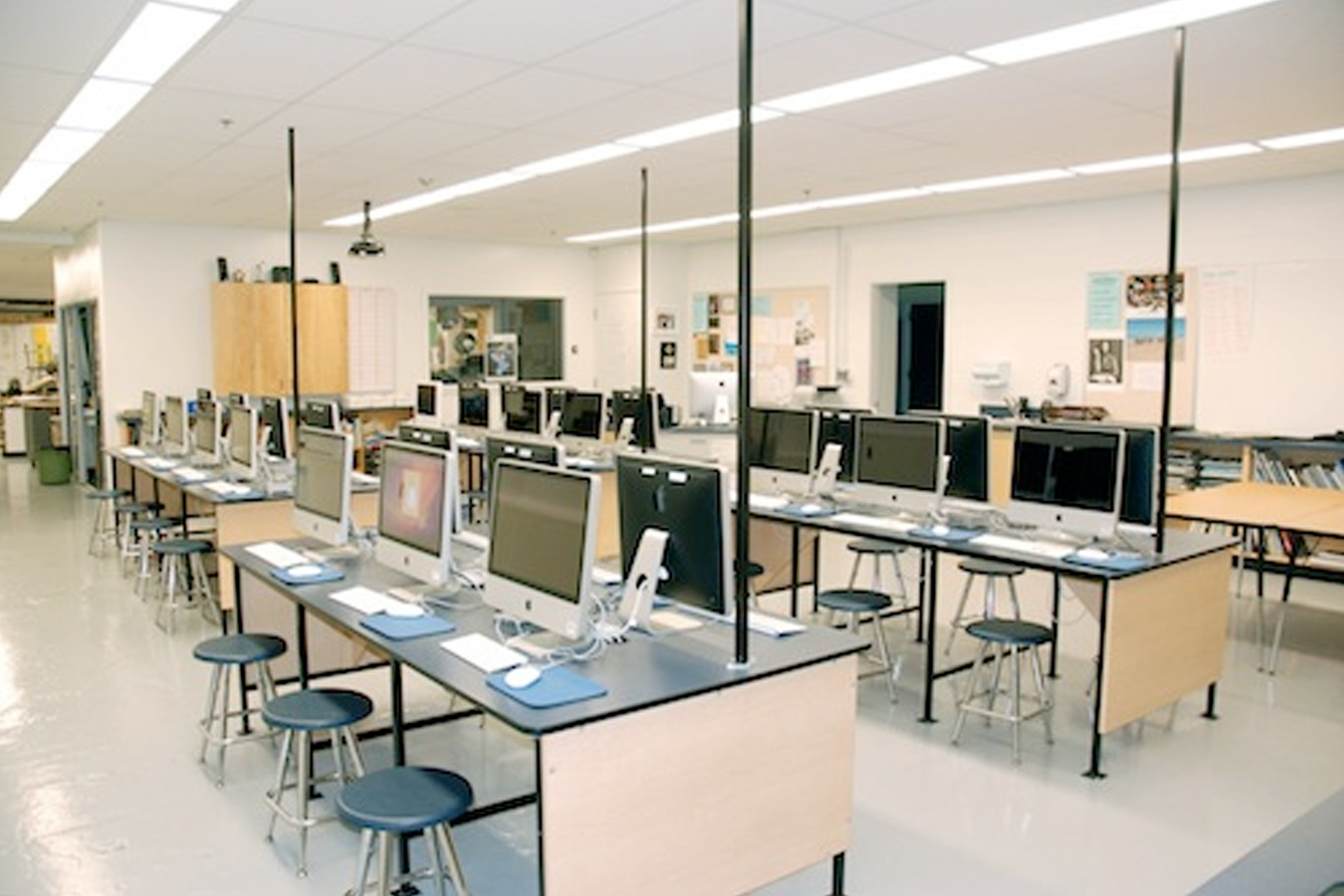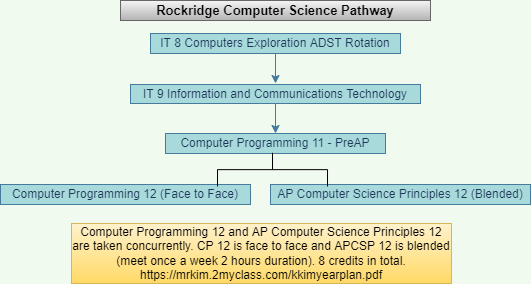
Information Technology
Information Technology
Technology literacy is a skill set that is in high demand in our global community. The three uses of information technology in a modern society are information technology (electronic resources), communication technology (telecommunication), and processing technology (software that help us do better, faster work). Technology is a tool and not an answer in and of itself. It should seen as a learning tool that students learn with, not from.
In preparing for the world outside of school, ICT students are posed real problems with real world connections. ICT classes are set up with project-based multimedia assignments that allow for real problems that seek to connect students’ work in school with the wider world in which the students live. It allows for student decision making, involves collaboration with others (students, community), and encompasses a full range of assessment, not just the final product. More importantly, it attempts to synthesize concepts from other courses. Come see what exciting opportunities await in the world of Information and Communications Technology.
 Rockridge Computer Science Pathway PDF
Rockridge Computer Science Pathway PDF
INFORMATION TECHNOLOGY 9:ITC DESIGN YEAR 4
(MADIT09-IB)
Information Technology 9 is a 37 weeks (120-hour) course used to develop basic cross curricular computing skills. The class focuses on these big ideas (social, ethical, and sustainability considerations impact design; complex tasks require the sequencing of skills; complex tasks require different technologies and tools at different stages). The curricular competencies will focus on the design cycle (understanding context, defining, ideating, proto-typing, testing, making, and sharing). The design cycle will focus on applied design, applied skills, and applied technologies.
- What is Computer Science? – what is a computer, humans and computers, application and uses
- Problem Solving – problem solving strategies, searching, sorting, solving simple mazes, solving simple puzzles, making algorithms
- Data and Codes – encoding and decoding data, data representation with binary numbers, encoding and decoding with cups, data representation using LEGO blocks
- Web Design – safety and security, social responsibility, HTML5, CSS3, JavaScript, Photoshop, Flash
- Programming – introduction to graphical programming, building algorithms in Scratch, building algorithms in Tynker, physical computing with drones, physical computing with Arduino boards
There is an optional enhancement fee for this course.
COMPUTER PROGRAMMING 11 PRE AP
(MCMPR11 ~ 4 CREDITS SCIENCE or APPLIED SKILLS)
There is no prerequisite for this course; however, students should consult with the teacher to see what essential skills are needed before enrolling. This is an introductory course that teaches the foundation of Computer Science. It will teach students to think computationally, solve complex problems and prepare them for AP Computer Science Principles 12.
The major areas of study in this course include human computer interaction, problem solving, computing and data analysis, web design, programming, and physical computing. Ethical and social issues in computing, and careers in computing, are woven throughout the units.
COMPUTER PROGRAMMING 12
(MCMPR12 ~ 4 CREDITS SCIENCE or APPLIED SKILLS)
There is no prerequisite for this course; however, students should consult with the teacher to see what essential skills are needed before enrolling.
The focus of MCMPR 12 is programming in Scratch, App Inventor, Processing, and Java. There will be a focus on Physical Programming using Arduino and Raspberry Pi boards. The class will work on a blended model where students will meet face to face once a week after school and also complete additional assignments online. Students should be highly motivated and be prepared to extend their learning outside of class time.
AP COMPUTER SCIENCE PRINCIPLES
(APCSP 12 – 4 credits Applied Skills, Math, or Science)
This is a new computer science course designed to give students foundational computing skills, an understanding of the real-world impact of computing applications, and programming literacy. AP Computer Science Principles builds on the concepts learned in earlier Programming 11 Pre AP and other lower level ICT courses.
Students will take AP Computer Science Principles 12 and Programming 12 concurrently and will receive credit for both courses. The major areas of study in this course are organized around seven big ideas built on the foundations of studying computer science. The seven big ideas include connecting computing, creating computational artifacts, abstracting, analyzing problems and artifacts, communicating, and collaborating. Each of these big ideas will have a set of essential questions that will allow students to connect to the content of the big ideas. The big ideas connect students to a curriculum scope that includes the art of programming, but not programming centric. There is a multiple choice AP Computer Science Principles exam and two through course performance tasks which require students to explore the impacts of computing and create computational artifacts through programming. The AP Computer Science Principles Curriculum Framework (.pdf/1.42MB) focuses on the innovative aspects of computing as well as the computational thinking practices that help students see how computing is relevant to many areas of their everyday lives.
Computational Thinking Practices
- Computational Solution Design
- Algorithms and Program Development
- Abstraction in Program Development
- Code Analysis
- Coding Innovations
- Responsible Computing
Big Ideas
- Creative Development
- Data
- Algorithms and Programming
- Computer Systems and Network
- Impact of Computing
The program will provide students with an opportunity to complete first year college/university Computer Science learning outcomes by the end of their grade 12 year. Students who choose to write the AP Computer Science Principles exam are charged an optional exam fee of $135.
There is also an optional enhancement fee for this course.